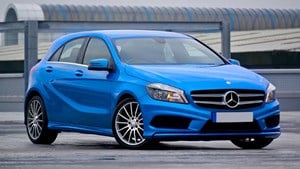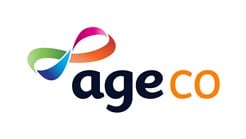What insurance group is my car?
9 minute read

Every car in the UK falls into a car insurance group, which is based on how it scores across a range of categories. These groups are used by insurers to assess the risk associated with insuring different vehicles, alongside other details.
In this article, we’ll explore what car insurance groups are, how they’re determined, and how to find out what group your car is in.

Over 50s Car Insurance
Age Co helps drivers stay protected on the road. We’re 100% owned by Age UK and our profits go back to the charity.
What are car insurance groups?
Each car insurance group represents a range of vehicles with similar characteristics, such as:
- Engine size
- Repair costs
- Safety features
- Performance
Each group is initially set out by the Group Rating Panel, this includes members of the Association of British Insurers and is supported by data from Thatcham Research.
In most cases, the lower the group number is, the lower the cost of the insurance is likely to be. This is because vehicles in higher groups are more expensive to repair.
How many car insurance groups are there?
There are 50 different insurance groups a car can fit into. Group one is generally the cheapest to insure and each group gets more expensive as you ascend to group 50. Typically, the more expensive a car is to buy or maintain, the higher your insurance group will be.
Here we list some example makes and models for a range of insurance groups.
|
Insurance Group |
Example cars |
||
|
1 |
Hyundai i10 |
Skoda Fabia hatchback |
Volkswagen Polo |
|
25 |
Audi A4 |
Citroen C5 |
Honda Accord |
|
50 |
Audi A8 |
Bentley Flying Spur |
Jaguar XJ |
What do the letters mean in car insurance groups?
Alongside the number in your car classification, you may also find a letter which is used to provide extra information about your vehicle’s security features. This letter can also alter the cost of your insurance, meaning a car that has an A rating may get a more competitive quote than one that has an E rating, even if it’s in the same numerical insurance group.
Here is a key for the insurance group letters:
- A - Acceptable security features for the vehicle’s group
- D - Doesn't meet the requirements for its group, which has raised the car’s group rating
- E - Exceeds requirements for its group, which has lowered the cars group rating
- P - Provisional, this means the information about the vehicle’s security is still pending
- U - Unacceptable security features, although some insurers may offer cover if you upgrade
- G - Import (only UK cars currently have insurance group ratings)
How to find your car insurance group
You may wish to find out which car insurance group a vehicle is in. If so, there are a number of options to use, depending on the information available to you.
What insurance group is my car?
Online resources
There are a range of tools available online for you to use, free of charge. Some tools will also allow you to progress without the registration number, using the make and model instead. However, your response may not be accurate if you don’t know the finer details about the vehicle, such as security fittings and trim.
Vehicle paperwork
If you have access to the vehicle’s paperwork, it’s worth checking to see if the insurance group is listed in either the owner’s manual or the registration documents.
Your insurance provider
If you already have insurance for the vehicle, you can contact your insurance provider directly and ask them to confirm the insurance group of your car.
Can car insurance groups change?
Yes, car insurance groups can change over time. The Group Rating Panel uses a range of factors that are subject to constant review.
The four core criteria currently include:
- Cost: the investment and time required to restore a vehicle to its original condition after a claim
- Price: the value of your vehicle should your insurer need to pay out in the event of a total loss
- Performance: accounting for the top speed, weight and 0-60 acceleration time of your vehicle
- Design: the design of your vehicle’s standard fit systems including safety and security equipment
These criteria are typically reviewed periodically by the Group Rating Panel in the UK.
Does my car group guarantee cheap car insurance?
If your car falls within a cost-efficient group, this doesn’t mean you’ll necessarily get a low car insurance quote. Wider factors will be taken into account that can influence prices.
For example
Car A may be cheaper to buy, with a smaller engine and lower repair costs than Car B. However, if Car B comes with robust safety features, such as advanced driver assistance systems (ADAS), or is equipped with security features to deter theft, it could be cheaper to insure even if it’s more expensive than Car A. This is due to the reduced risk of accidents, theft, and expensive repairs.
What else affects the cost of my insurance?
Whilst insurance groups can give an indication about insurance costs, it’s important to know that there are other factors at play.
External factors
If you’ve ever found yourself asking ‘why is car insurance so expensive?’, you’re not alone. The truth is the price of car insurance can rise and fall on a regular basis. This can be due to external factors such as inflation or industry setbacks, which can make the car insurance market subject to frequent fluctuations.
For example, if there were a shortage of certain car parts due to a global distribution issue, this could raise the price of certain repair work, as well as increase the time involved. As a result, insurers would need to increase their prices to cover the associated costs.
Personal factors
Insurance prices are calculated to reflect your personal circumstances, including:
- Your age
- Your address
- Your mileage
- Your No Claim Discount (NCD)
- Your driving history, such as convictions or claims
Some factors, such as your age, are outside of your control. However, there are some changes you might consider if you want to bring down the cost of your car insurance, such as reducing your mileage or avoiding driving convictions.
You can read more about how to reduce the cost of your car insurance in our article.
Summary
When it comes to car insurance groups, here are some key takeaways to consider:
- There are currently 50 car insurance groups.
- Typically, those at the lower end of the scale are the cheapest to insure.
- What group a car falls into is decided on factors such as: price, safety, repair costs, performance, and security.
- Letters, used alongside the car insurance group number, refer to security features and will also affect the cost of insurance.
- Many factors affect the cost of car insurance, including market trends and personal circumstances.
- If you want to find the right car insurance for you, try shopping around or researching changes you could make that may bring costs down.
You can find out more about Car Insurance offered by Age Co by clicking here.

Sign up to the Age Co Newsletter
Each month, our email newsletter delivers inspiring stories, practical guides to later life, plus the latest news about Age Co and the charitable work we support.
